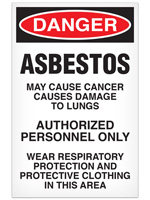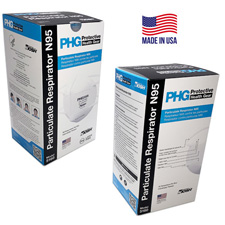



Find all of your laboratory and workplace safety supplies at Safety Emporium!
 Pictograms |
 Glossary Index |
 Poison |
| MSDS Topics |
Free Sites | FAQ's | Regulations | Glossary | Software | Suppliers |
| Books | Forum | Poll | Fun stuff | Quiz | Store | |
| Understand your MSDS with the MS-Demystifier | Search ALL our MSDS info | |||||

There are additional forms of pneumoconiosis that affect coal miners, welders, hard mineral dusts, talc, kaolin and more. See the first link under Further Reading below.
Section Section 11 (toxicological information) of the Safety Data Sheet will warn of pneumoconiosis if the material is known to cause this kind of damage. Pneumoconiosis is a serious hazard at locations where dust is produced. Examples include coal mines, quarries and foundries. Breathing dust day after day is not normal and can result in permanent lung damage. Always take care to minimize the formation of dusts in the first place and use adequate personal protective equipment (PPE) such as dust masks or respirators in the presence of such materials. Section 8 (exposure controls/personal protection) of the sheet will have specific recommendations.
Keep in mind that the lung damage caused by inhalation of dusts may initially not cause any symptoms, even though damage has been done. If you wait until symptoms appear before taking appropriate precautions, the damage may be irreversible.

Get your PPE such as made in USA NIOSH-approved N95 masks from Safety Emporium.
See also: emphysema, fibrosis.
Additional definitions from Google and OneLook.
Entry last updated: Saturday, January 7, 2023. This page is copyright 2000-2024 by ILPI. Unauthorized duplication or posting on other web sites is expressly prohibited. Send suggestions, comments, and new entry desires (include the URL if applicable) to us by email.
Disclaimer: The information contained herein is believed to be true and accurate, however ILPI makes no guarantees concerning the veracity of any statement. Use of any information on this page is at the reader's own risk. ILPI strongly encourages the reader to consult the appropriate local, state and federal agencies concerning the matters discussed herein.